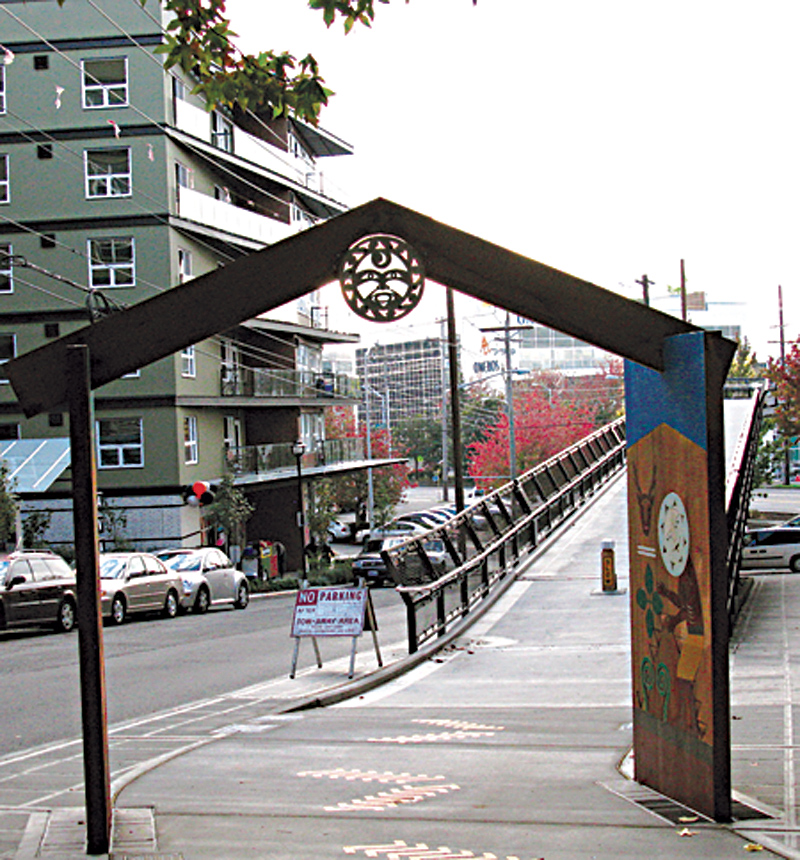My commute has been immeasurably improved—well, actually improved by $10 million—thanks to the new West Thomas Street Overpass, which connects Lower Queen Anne to Myrtle Edwards Park. Handsomely lit by LEDs at night, it vaults above Elliott and the railroad tracks, sparing pedestrians and cyclists the insanely dangerous crosswalk. (There at Elliott and Western, rush-hour drivers routinely run the red.) Proposed back in the Nickels era, the long-delayed span was originally scheduled to open this spring. While not so elegant as Amgen’s privately funded footbridge a mile north, it’s a welcome addition in all respects but one: What the hell is that Indian-kitsch cedar archway on the east side? Bad enough that cyclists coming down from Queen Anne have to navigate the awkward curb cut, then avoid the sidewalk smokers and large trees. Then they must duck through/swerve around the wooden doorway, which further impedes the view of the tibia-breaking bollard in the mouth of the overpass. (SDOT’s bollard obsession . . . that’s another column.) Most city projects have a one-percent-for-art component, which I applaud. But not in the middle of the path, not if it’s unsafe. Native American artist Roger Fernandes has also inlaid some brass waves into the pavement for Snoqual, and the water motif is appropriate—that’s where most people are headed. But, as in Portlandia‘s “Put a bird on it!” sketch, the time when we can simply slap a Tlingit raven on something and call it art has passed. This crowded city doesn’t need more totem poles or hazardous road furniture. The misplaced portal should be moved down to Myrtle Edwards, off the path. Elliott Ave. W. & W. Third St., seattle.gov/transportation/thomasoverpass.
The Fussy Eye: Art and Obstruction
The bridge and the door.








